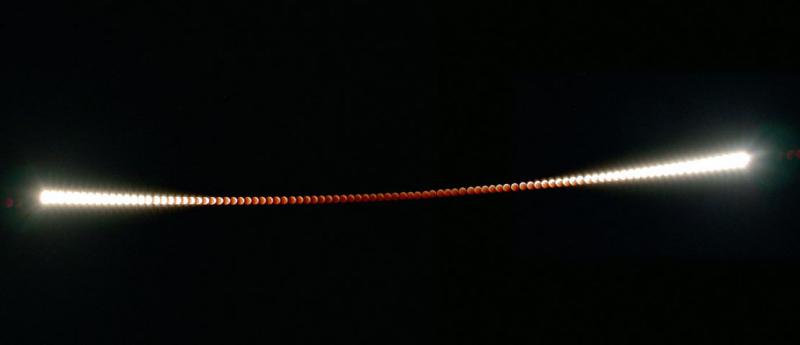
|
Credit & Copyright: Forrest J. Egan
(Digital Astro)
Explanation:
During last week's lunar eclipse, our Moon appeared to disappear.
As the Earth moved between the Moon and the Sun, the
Earth's shadow fell on the moon, making it
quite dark.
In the above picture the Earth's rotation, multiple exposures, and
digital enhancements are used to create a time-lapse effect that dramatizes how the
Moon looked as it faded out and re-appeared during the three hour
lunar eclipse.
As the Earth's shadow
engulfed the Moon, the lunar images became less and less bright,
practically disappearing during
totality.
At this time, the Moon, which normally shines by
reflecting direct sunlight, shone only by sunlight refracted through the
Earth's atmosphere.
The next total lunar eclipse won't be visible from Earth
until 2007.
|
January February March April May June July August September October November December |
| ||||||||||||||||||||||||||||||||||||||||||||||||
NASA Web Site Statements, Warnings, and Disclaimers
NASA Official: Jay Norris. Specific rights apply.
A service of: LHEA at NASA / GSFC
& Michigan Tech. U.
Based on Astronomy Picture
Of the Day
Publications with keywords: lunar eclipse - Sun - Moon
Publications with words: lunar eclipse - Sun - Moon
See also:
- APOD: 2025 September 11 Á The Umbra of Earth
- APOD: 2025 August 23 Á Fishing for the Moon
- APOD: 2025 July 30 Á Coronal Loops on the Sun
- APOD: 2025 July 20 Á Lunar Nearside
- APOD: 2025 June 28 Á Lunar Farside
- APOD: 2025 June 20 Á Major Lunar Standstill 2024 2025
- APOD: 2025 June 18 Á Space Station Silhouette on the Moon
